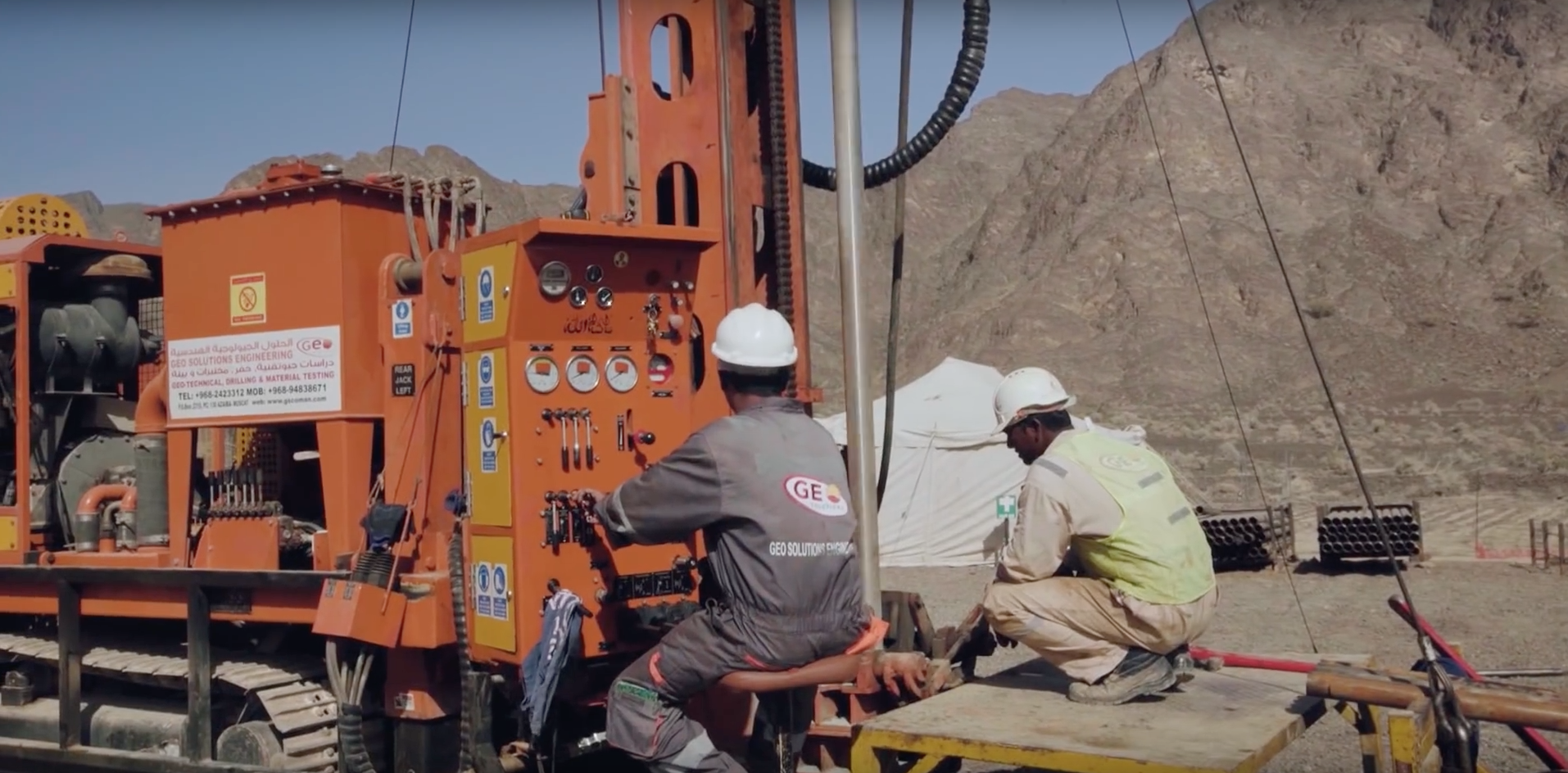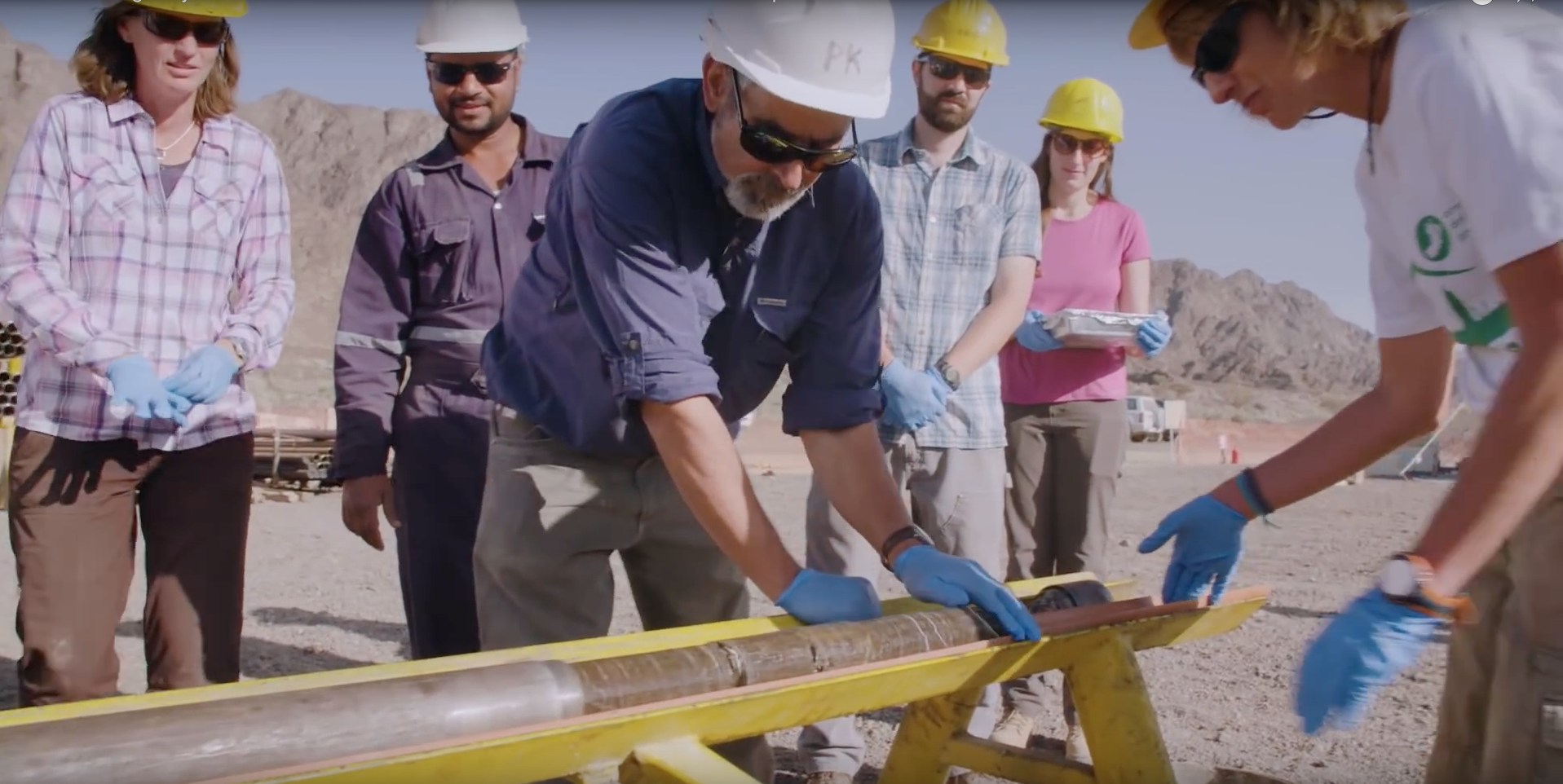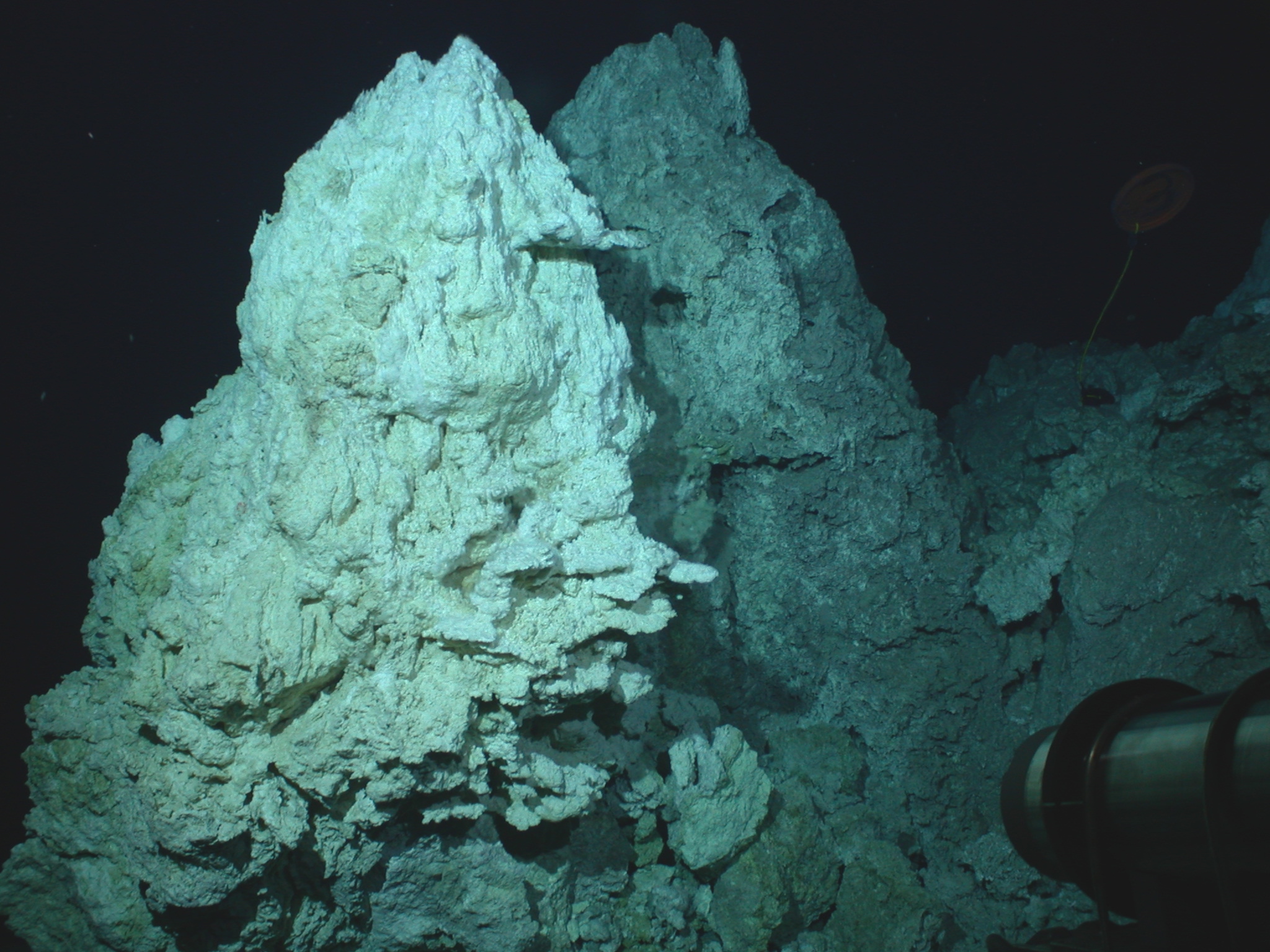-
Drilling for Rock-Powered Life
September 26, 2019 / Posted by: Sarah Wild
Visible fractures in exposed lithospheric rock in Oman. Credit: University of Colorado, Boulder.A slab of ancient sea bed in Oman could guide scientists’ search for extraterrestrial life.
Hundreds of meters under the surface of a rocky valley in Oman, the sultanate on the south-eastern coast of the Arabian Peninsula, microbes are thriving even though there is no oxygen. In the past, and in fact until quite recently, scientists thought that oxygen was vital for life, but unique habitats around the world are increasingly showing that life is more diverse than we initially expected – and might be found in many more places than had previously been assumed.
The valley, known as the Semail Ophiolite, is a unique treasure for scientists looking to study not only the origins of life on Earth, but also other hypothetical types of life that could possibly populate the Solar System, and the Universe. It was once an ancient sea bed, but shifting tectonic plates pushed it up onto the continental crust, making it the largest exposed piece of oceanic crust in the world, ideal for study without the expensive technical feat that would be required to reach deep into the Earth elsewhere in the world.
Scientists believe that interfaces such as this – between the Earth’s rocky mantle and the ocean that covers most of the planet – could have been where life began on our planet, and that similar frontiers elsewhere in the Universe could be prime locations for life.
“We think that there are analogous habitats and processes on other planets, and it informs where we look, how we detect it, and how we go about looking for it,” says Alexis Templeton, Principal Investigator of the NASA Astrobiology Institute (NAI’s) Rock-Powered Life program.

The rock-powered life NAI team. Credit: University of Colorado, Boulder.This has important implications for humanity’s hunt for extraterrestrial life. On Jupiter’s moon Europa, for example, an outer layer of water encases a rocky core, similar to the situation on Earth. The chemical interaction between the water and rock could make Europa one of the best known candidates for other life in our Solar System. Enceladus, one of Saturn’s icy satellites, is also covered in frozen water, with a possibly rocky core. And even though the surface of Mars is dry, there could be life, or the remains of past life, entombed underground.
Life Without Oxygen
In a process known as serpentinization, mantle rock reacts with seawater and produces methane, hydrogen, and small organic molecules. The NAI team investigates how these rocks are able to power biological processes. The organisms that they have found are able to consume hydrogen in places where there is little or no oxygen. As Templeton and her colleagues continue to show, in Oman and other places around the world some organisms are able to flourish in these boundary areas even though there is no oxygen.As part of the Oman Drilling Project, a multinational investigation of the Semail Ophiolite, Templeton is hunting for microbes in the rock cores that are being drilled out of the exposed crust. The drilling extends down to about 400 meters (~1,300 feet).
“The rock is fractured and has networks that allow fluids to move through it, connecting one pore to another,” explains Templeton, who is a geomicrobiologist at the University of Colorado, Boulder. “There are different chemical niches where more water, energy sources or oxidants migrate. We’re hunting for the right places in the subsurface, within the rock fracture network, which are the most favorable for organisms to colonize and grow.”
Their data shows the ways in which microbial communities can “exist and persist in the subsurface”, and those conditions guide where scientists are more likely to find life under the surface of Mars or in the rocky mantle under Europa’s ocean, she says.
But determining exactly where these oases are in the rocky systems is a challenge. “When you collect fluid, you can show that there are organisms in the fluid circulating in the rocks, and what [those organisms] are, but it is difficult to show where in the subsurface rocks they come from, where they reside,” Templeton says.
Also, compared to areas above ground where any sample may yield a large quantity of microbes, the total number of organisms in the samples from the Oman rock cores is small, which creates some technical difficulties. However, Templeton says that they have managed to extract DNA, membranes and other components out of the rocks.
“We see quite a lot of diversity of organisms, but for some of them, we don’t even know what they are doing,” she says. For example, they see lots of organisms that produce methane, which is a mixture of hydrogen and carbon, “but how they make it, how they are acquiring the carbon and hydrogen to make methane, is another question.”

Drilling for rock cores in the Semail Ophiolite. Credit: NASA/University of Colorado, Boulder.
One of the rock cores drilled from the exposed lithospheric rocks in Oman’s Semail Ophiolite. Credit: NASA/University of Colorado, Boulder.The Lost City
Oman is not the only place that the NAI team is searching for this unexpected life.Other members of the group, led by the University of Utah’s William Brazelton, as well as Matt Schrenk of Michigan State University and Lisa Mayhew of the University of Colorado, Boulder, among others, are hunting for more rock-powered microbes in the eerie Lost City hydrothermal field in the Atlantis Massif. This massif is another area of exposed mantle, but this time rising out of the floor of the Atlantic Ocean, also created by plate movement.
The Lost City – which is named after the mythical lost city of Atlantis – is made up of carbonate towers that loom 60-meters above the seafloor and expel boiling mineral-rich water into the ocean. The vent is powered by the chemical interaction between the seawater and the scorching mantle. The carbon in this fluid, which has been exploding out of the seafloor for at least 120,000 years, has accumulated over the years into the Lost City’s hundreds of spires.
But it is the life that lives in the Lost City that has captured the attention of the NAI team. In 2018, Brazelton was co-chief scientist on an expedition down to the Lost City, the first trip to the site in more than a decade.
Carbon and energy from the Earth’s mantle sustain the organisms that inhabit the Lost City. One of the goals of the recent expedition, according to the University of Utah team, was to investigate how and where this carbon, which is thought to originate deep in the Earth’s subsurface, is produced and which carbon molecules are consumed by which microbes.
Brazelton’s lab specializes in metagenomics, which involves studying the whole genomes of organisms in environmental samples without culturing them first.
“This has been a highly productive strategy for studying weird life in the seafloor because it is extremely difficult to keep novel microbes alive in the laboratory,” he says.
Metagenomic sequencing allows the researchers to generate large quantities of data from tiny samples. “Also, the microbial world is inherently genetically diverse, so studying their genomes can actually be highly informative about their metabolic capabilities,” Brazelton notes.
Team Effort
In total, the NAI team comprises about 50 people, but everyone brings different expertise to the table, Templeton says. She is quick to emphasize that there are a number of co-investigators in the team working on rock-powered life. The team includes Eric Boyd from Montana State University, Tori Hoehler from NASA’s Ames Research Centre, Dawn Cardace from the University of Rhode Island, Everett Shock from Arizona State University and John Spear from the Colorado School of Mines.“As a team, we have a lot of expertise: biology, chemistry, geology. [With] such a big team, we can really develop an understanding at the forefront of those fields. No single one of us has all of those expertise,” she explains.
But all of those competencies are needed to decipher the mysteries of rock-powered life, in which abiotic chemical processes give rise to biological life – processes that could be the key to finding life on other planets in our Solar System and beyond.
“The rock that provides the fuel for the Lost City microbes [ultramafic rocks rich in the mineral olivine] appear to be widespread in the Solar System, and serpentinization is thought to be active on Europa and Enceladus and perhaps other places in the Solar System,” Brazelton says.
“Figuring out how rocks are powering life on Earth is the first step to figuring out how rocks can or cannot be powering life elsewhere in the Solar System.”

A second site that the NAI team is studying for rock-powered microbes is the Lost City, in the subterranean Atlantis Massif. Credit: NOAA.
A 60 meter (200 feet) tall carbonate chimney in the field of hydrothermal vents known as the Lost City, which could also be home to rock-powered life. Credit: NOAA/University of Washington.
- The NASA Astrobiology Institute Concludes Its 20-year Tenure
- Global Geomorphologic Map of Titan
- Molecular Cousins Discovered on Titan
- Interdisciplinary Consortia for Astrobiology Research (ICAR)
- The NASA Astrobiology Science Forum Talks Now on YouTube
- The NASA Astrobiology Science Forum: The Origin, Evolution, Distribution and Future of Astrobiology
- Alternative Earths
- Imagining a Living Universe
- Workshops Without Walls: Astrovirology
- Rutgers Researchers Identify the Origins of Metabolism